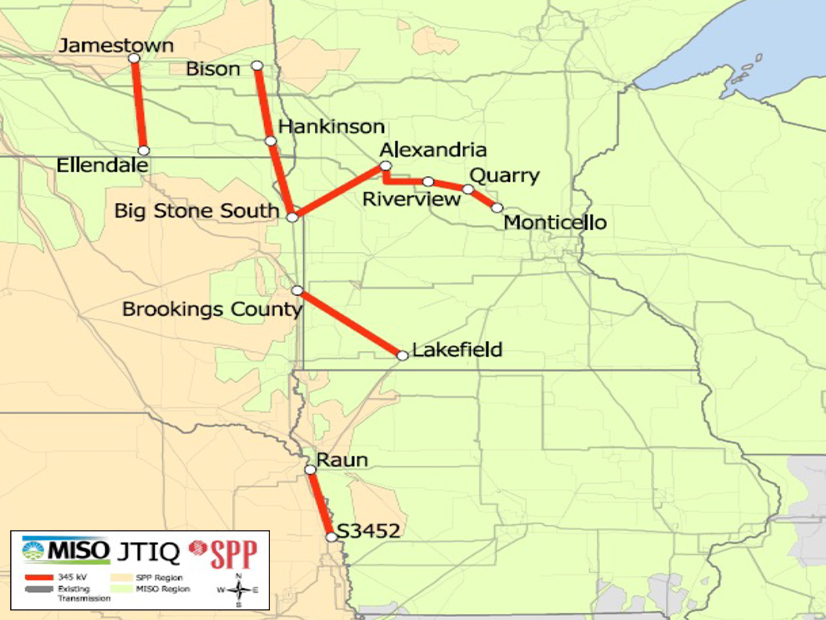MISO and SPP state regulators plan to ensure they are involved in the grid operators’ ongoing discussions about sharing costs from their joint targeted interconnection queue (JTIQ) study.
The RTOs last month identified a $1.755 billion portfolio of seven suggested projects. The portfolio would deliver $724 million and $247 million of adjusted production cost (APC) benefits to customers in the MISO and SPP footprints, respectively, with a cumulative benefit-to-cost ratio of 0.56. (See MISO, SPP Roll out $1.755B Joint Tx Portfolio.)
The JTIQ study team is finalizing its report and plans a series of cost-allocation workshops through midyear. Once it has agreed on a cost-sharing mechanism, it will be filed for approval with FERC.
“Future comments to FERC need to be approved. I see us being involved in every meeting moving forward,” Ryan Silvey, chair of the Missouri Public Service Commission, said during the Seams Liaison Committee’s (SLC) meeting Feb. 22. Cost allocation is “something that we continue to talk about pretty much every time we get together.”
“The biggest knot to untie is cost allocation,” South Dakota Public Utilities Commissioner Kristie Fiegen said, noting differences between the RTOs’ stakeholder processes. “That’s been some of the issues the last few years. We just need to ensure we have a clear understanding of what that looks like in the near future.”
The SLC, comprising members from the Organization of MISO States and SPP’s Regional State Committee, also discussed early results from a working group inventorying rate-pancaking types along the MISO-SPP seam. Grandfathered agreements that result in “hundreds of megawatts flowing across the seam” remains an issue that hasn’t been addressed yet, said Marcus Hawkins, OMS’ executive director.
The working group and the SLC will regroup May 18 for additional discussion on pancaking issues.



